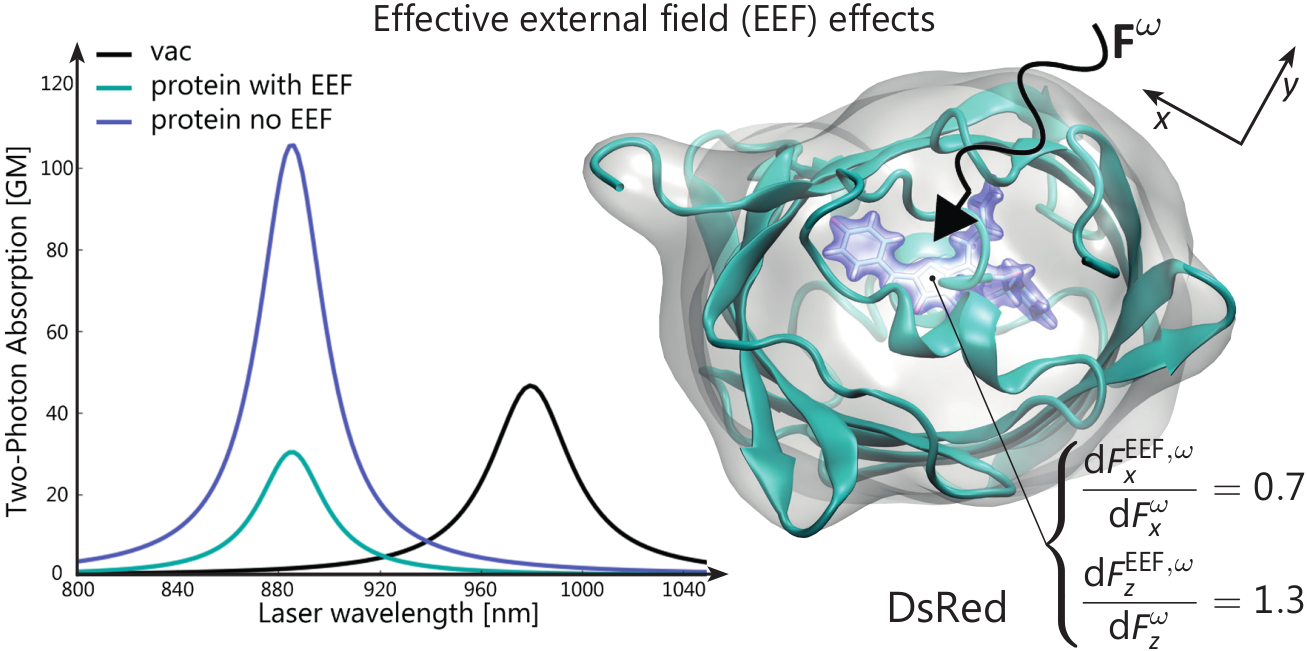N. H. List, H. J. Aa. Jensen, J. Kongsted
Phys. Chem. Chem. Phys. 2016, 18, 10070
Abstract
In spectroscopies, the local field experienced by a molecule embedded in an environment will be different from the externally applied electromagnetic field, and this difference may significantly alter the response and transition properties of the molecule. The polarizable embedding (PE) model has previously been developed to model the local field contribution stemming from the direct molecule-environment coupling of the electromagnetic response properties of molecules in solution as well as in heterogeneous environments, such as proteins. Here we present an extension of this approach to address the additional effective external field effect, i.e., the manifestations of the environment polarization induced by the external field, which allows for the calculation of properties defined in terms of the external field. Within a response framework, we report calculations of the one- and two-photon absorption (1PA and 2PA, respectively) properties of PRODAN–methanol clusters as well as the fluorescent protein DsRed. Our results demonstrate the necessity of accounting for both the dynamical reaction field and effective external field contributions to the local field in order to reproduce full quantum chemical reference calculations. For the lowest π → π* transition in DsRed, inclusion of effective external field effects gives rise to a 1.9- and 3.5-fold reduction in the 1PA and 2PA cross-sections, respectively. The effective external field is, however, strongly influenced by the heterogeneity of the protein matrix, and the resulting effect can lead to either screening or enhancement depending on the nature of the transition under consideration.
